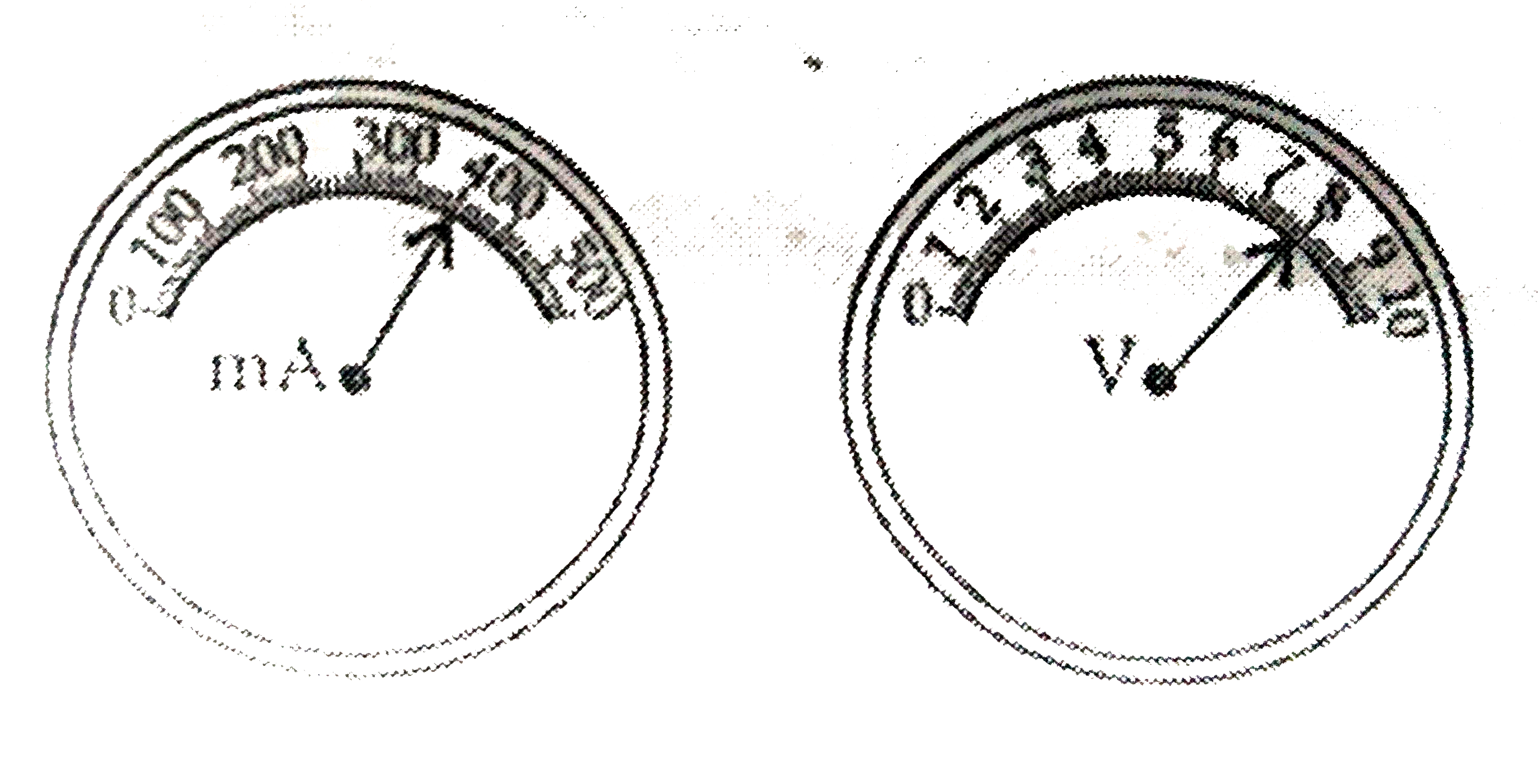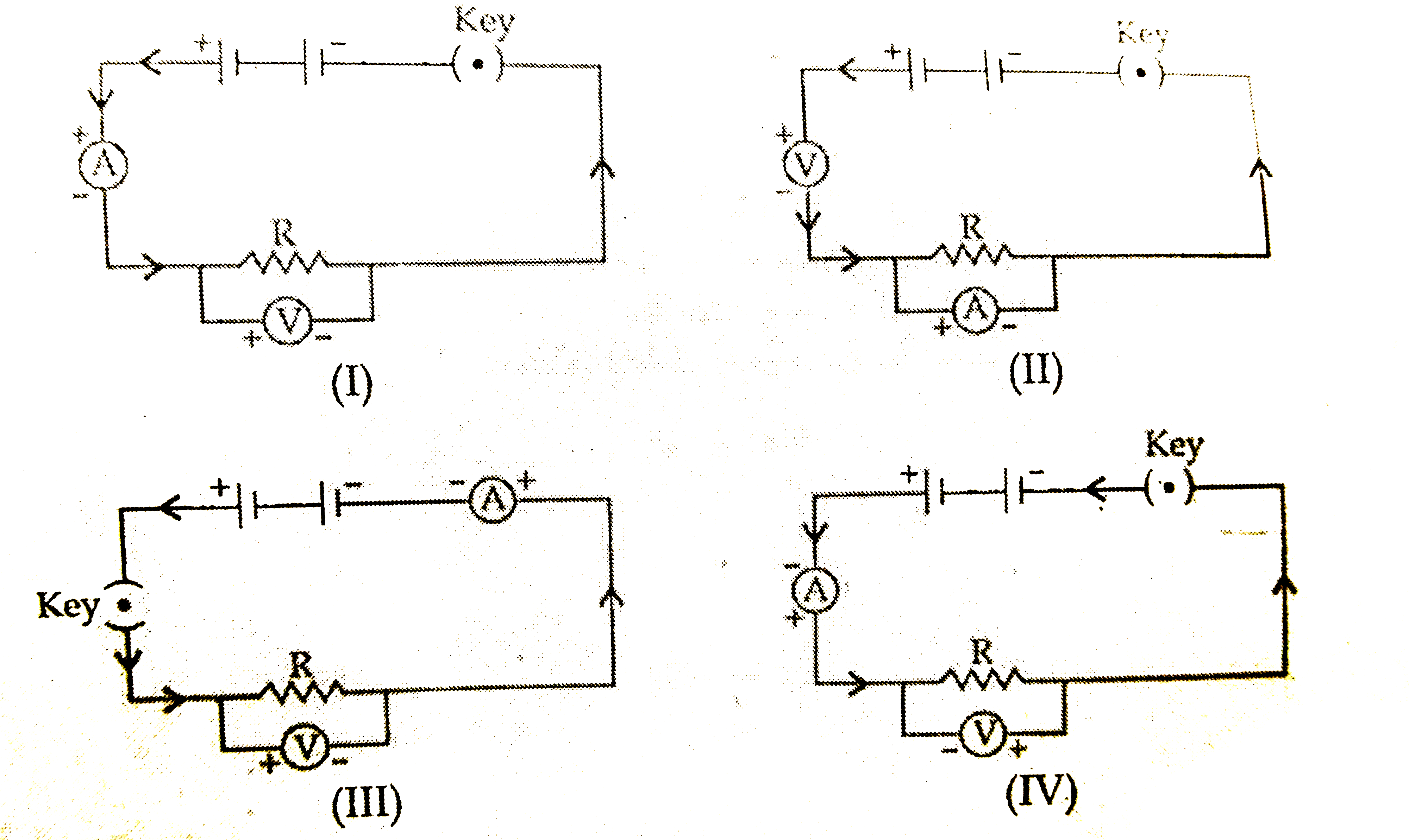Complete Solutions to SECTION B of chapter X BOARDS of Class 10 book with complete answers and questions
| Class 10 | PHYSICS |
| Chapter | X BOARDS |
| X BOARDS PREVIOUS YEAR | SECTION B |
| Number Of Questions | 29 |
| Academic Year | 2023-24 |
Give any four precautions taken by a student to perform an experiment to determine the resultant resistance of two resistors when connected in series.
View SolutionWhy does a ray of light while passing through a prism, bend towards its base?
View Solution(a) What is least count of voltmeter ?
(b) In a voltmeter there are 20 divisions between the '0' mark and 0.5 V mark. Calculate its least count.
View SolutionWhat are the precautions taken to prepare a temporary mount of a leaf peel to show its stomata?
View SolutionList the factors on which the angle of deviation through a prism depend?
View SolutionThe reading of current flowing through a conductor and the potential difference its two end are shown in the ammeter and volmeter given below. What will be the value of resistance in it?

View SolutionTwo resistance `R_(1) = 10` ohm and `R_(2) = 10` ohm are to be connected with 20V battery. Out of which of the following maximum current will flow. Calcuate its magnitude.

View SolutionFor finding the focal length of a concave mirror, where do we keep the object? What is the position of image formed? On which structure we get the image? What is the nature of the image formed?
View SolutionA student prepared a temporary mount of a leaf peel and observed some green dots.
(i) Name these green dots and name the pigment present in them.
(ii) State the function of this pigment.
View SolutionWhich is smaller, terminal-p.d. or e.m.f. of a cell and why ?
View SolutionWhen a ray of light passes thorugh a glass slab how many times does it change its path and why ?
View SolutionA student while verifying Ohm's law calculated the value of resistance of the resistor for each set of observation .However, the values of resistance were slightly different from the actual value . Is his experiment wrong ? Justify your answer.
View SolutionTo find the image-distance for varying object-distances in case o fa convex lens, a student obtains on a screen a sharp image of a bright object places very far from the lens. After that he gradually moves the object towards the lens and each time focuses its image on the screen.
(a) In which direction-towards or away from the lens, does he move the screen to focus the object ?
(b) What happens to the size of image - does it increase or decrease?
(c ) What happen when he moves the object very close to the lens ?
View SolutionDraw a labelled circuit diagram to study the dependence of current (I) on the potential
difference (V) across a resistor.
View SolutionStudents were asked to observe the permanent slides showing different stage of
budding in yeast under high power of a microscope.
(a) Which adjustment scraw (coarse/fine) were you asked to move to foucs the slides?
(b) Draw three diagrams in correct sequence showing budding in yeast.
View SolutionA 4 cm tall object is placed on the principal axis of a convex lens. The distance of the
object from the optical centre of the lens 12 cm and its sharp image is formed at a
distance of 24 cm from it on a screen on the lens, in the which ways (towards the lens or away from the
lens) will he have to move the screen to get a sharp image of the object on it again?
How will the magnification of the image be affected ? .
View SolutionIn an experiment , to study the dependence of potential difference (V) on the electric current (I) across a conductor (resistor), if the circuit is on for long time, then -select two correct options from the following:
(i) Zero error of an ammeter will be changed.
(ii) Zero error of a voltmeter will be changed .
(iii) Value of a resistance will be changed.
(iv) Resistor will be heated.
View SolutionIdentify the observed various parts of temporary mount of well stained leaf peel, when focussed under te high power of a microsocope.
View SolutionA student focuses the image of a well illuminated distant object on a screen using a convex lens. After that the gradually moves the object towards the lens and each time focuses its image on the screen by adjucting the lens.
(a) In which direction -towards the screen or away from the screen, does he move the lens ?
(b)What happens to the size of the image-does it decrease or increase ?
(c) What happens to the image on the screen when he moves the object very close to the lens ?
View SolutionTo study the dependence of potential difference (V) on current I across Resistor (R), Four circuit diagrams are prepared.

(i) Select the circuit diagrams which are correct.
(ii) Give reason for the circuit diagrams which are not correct.
View SolutionA student is viewing under a microscope a permanent slide showing various stages of asexual reproduction by building in yeast. Draw diagrams of what he observes. (In proper sequence)
View SolutionAn object of height 2.5 cm is placed at a distance of 15 cm from the optical centre 'O' of a convex lens of focal length 10 cm. Draw a ray diagram to find the position and size of the image formed. Mark optical centre 'O', principal focus F and height of the image on the diagram.
View SolutionGive any four precautions taken by a student to perform an experiment to determine the resultant resistance of two resistors when connected in series.
View SolutionA student places a candle flame at a distance of about 60 cm from a convex lens of focal length 10 cm and focuses the umage of the flame on a screen. After that he gradually moves the flame towards the lens and each time focuses the image on the screen.
(a) In which direction-toward or away from the lens, does he move the screen to focus the image ?
(b) How does the size of the image change ?
(c) How does the intensity of the image change as the flame moves towards the lens ?
(d) Approximately for what distance between the flame and the lens, the image formed on the screen is inverted and of the same size ?
View Solution(a) What is least count of voltmeter ?
(b) In a voltmeter there are 20 divisions between the '0' mark and 0.5 V mark. Calculate its least count.
View SolutionA student focuses the image of a candle flame, placed at about 2 m from a convex lens of focal length 10 cm, on a screen. After that, he moves gradually the flame towards the lens and each time its image on the screen.
(a) In which direction does he move the lens to focus the flame on the screen?
(b) What happens to the size of the image of the flame formed on the screen ?
(c) What difference is seen in the intensity (brightnees) of the image of the flame on the screen ?
(d) What is seen on the when the flame is very close (at about 5 cm) to the lens ?
View SolutionWhile traching the path of a ray of light passing through a rectangular glass slab a student tabulated his observations. If in his experiment for two readings he takes two values of ` angle ians 40^(@) and 50^(@)` . What should be the correct values of `anglee and angler` in each case ?
View SolutionDraw a labelled ray diagram for the formation of image by a convex lens of focal length 15 cm when the object is placed at a distance of 25 cm from the lens. Determine the size of the image formed, if size of the object is 4 cm.
View SolutionYou have following material :
An ammeter ( 0-1A0 ,a voltmeter ( 0-3V) , a resistor of ` 20 Omega` , a key, a rheostat, a battery of 3 V and seven connecting wires.
Using this material draw a labelled circuit diagram to study the dependence of potential difference (V) across a resistor ont he current (I) passing through it.
View Solution
SECTION B questions and complete solutions for chapter X BOARDS of X BOARDS of Class 10
All Exercises from X BOARDS PREVIOUS YEAR Class 10 PHYSICS X BOARDS
- SECTION A
- SECTION A
- SECTION B
- SECTION B
- SET I (SECTION-A)
- SET I (SECTION-A)
- SET I (SECTION-B)
- SET I (SECTION-B)
- SET I (SECTION-C)
- SET I (SECTION-C)
- SET I (SECTION-D)
- SET I (SECTION-D)
- SET I (SECTION-E)
- SET I (SECTION-E)
- SET II (SECTION -A
- SET II (SECTION -A
- SET II (SECTION -B)
- SET II (SECTION -B)
- SET II (SECTION -C)
- SET II (SECTION -C)
- SET III (SECTION -A)
- SET III (SECTION -A)
- SET III (SECTION -B)
- SET III (SECTION -B)
- SET III (SECTION -C)
- SET III (SECTION -C)
- SET-I SECTION-A
- SET-I SECTION-A
- SET-I SECTION-B
- SET-I SECTION-B
- SET-I SECTION-C
- SET-I SECTION-C
- SET-I SECTION-D
- SET-I SECTION-D
- SET-I SECTION-E
- SET-I SECTION-E
- SET-II SECTION-A
- SET-II SECTION-A
- SET-II SECTION-C
- SET-II SECTION-C
- SET-II SECTION-D
- SET-II SECTION-D
- SET-III SECTION-A
- SET-III SECTION-A
- SET-III SECTION-B
- SET-III SECTION-B
- SET-III SECTION-C
- SET-III SECTION-C
- SET-III SECTION-D
- SET-III SECTION-D